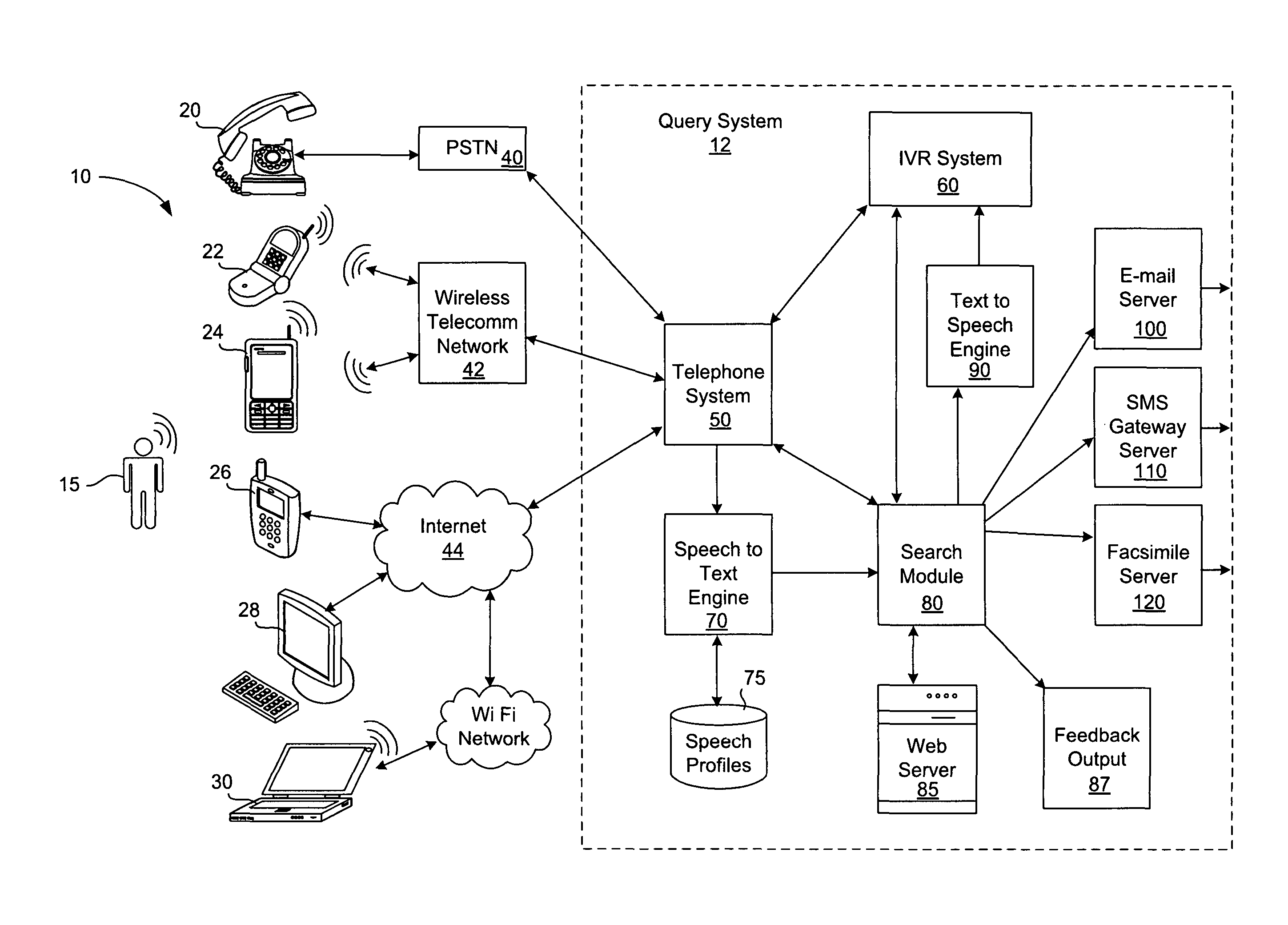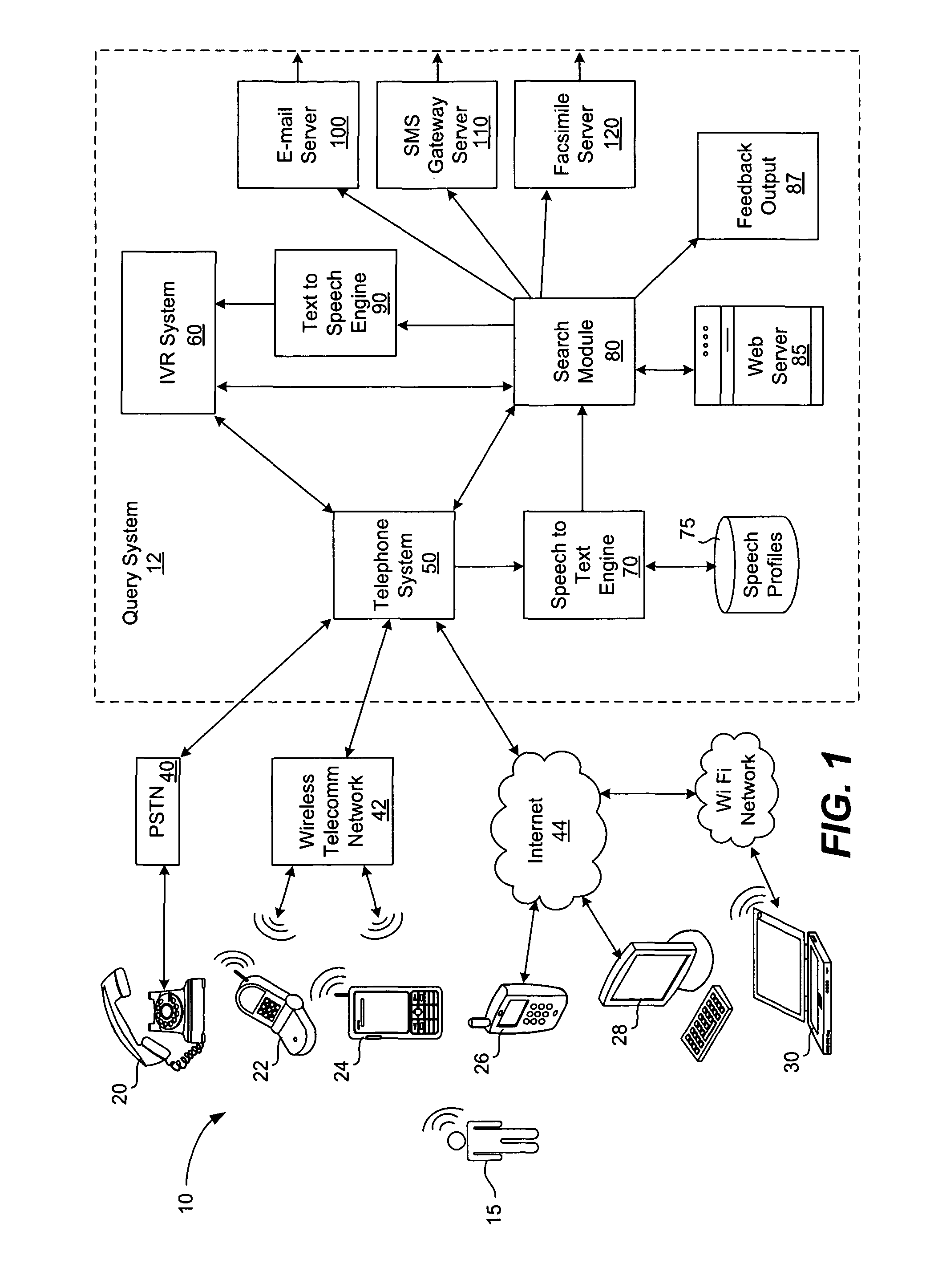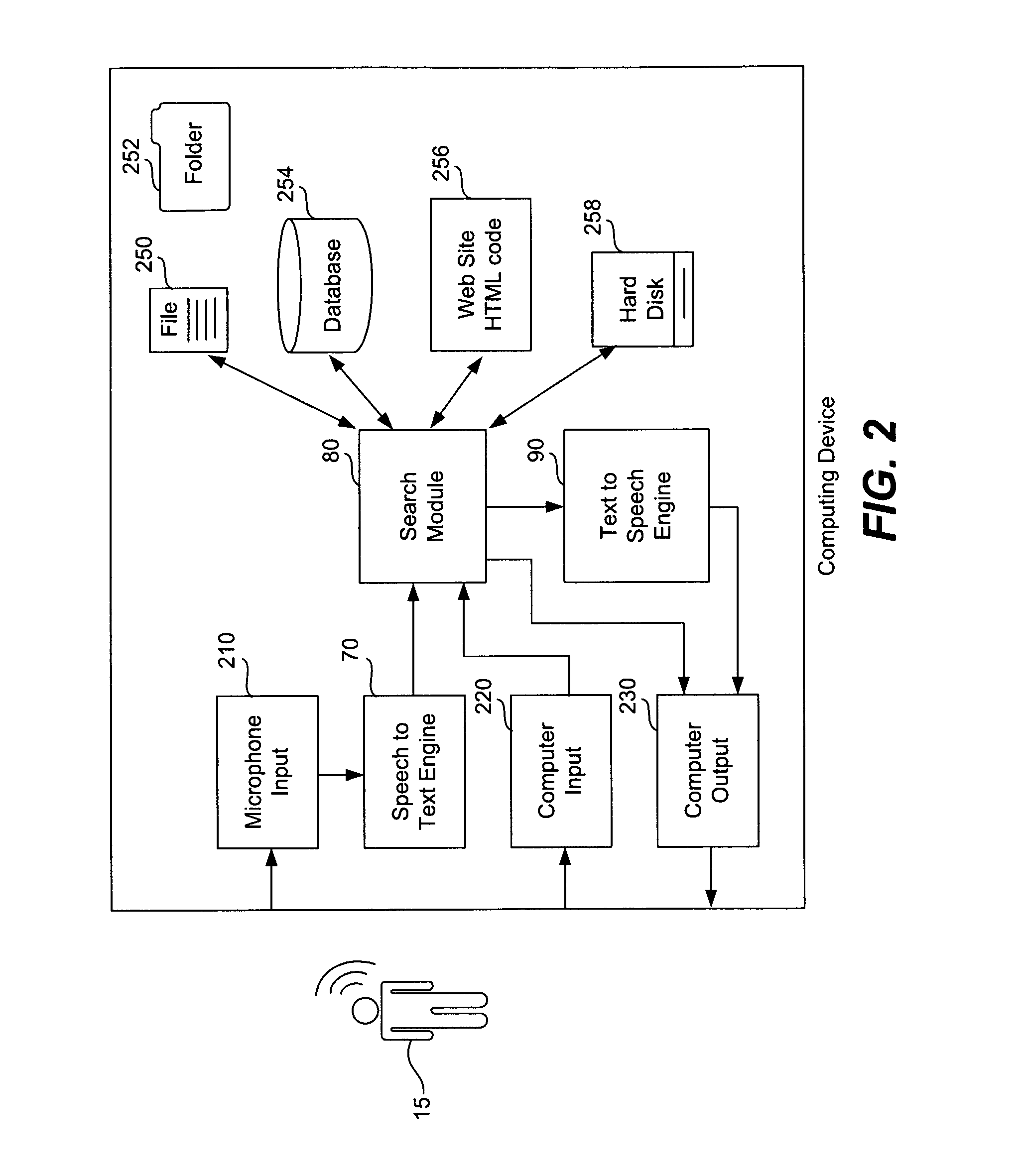Web site or directory search using speech recognition of letters
a speech recognition and letter technology, applied in the field of search for information, can solve the problems of affecting the ability of a person to perform queries and receive information, unable to have ready access to a computer in order to answer questions, and unable to find a person to speak with, let alone have a question answered, etc., to achieve the effect of reducing search space, speeding up search, and saving tim
- Summary
- Abstract
- Description
- Claims
- Application Information
AI Technical Summary
Benefits of technology
Problems solved by technology
Method used
Image
Examples
embodiment
Telephone Directory Embodiment
[0062]FIG. 7A is a table 700 illustrating one example of a business telephone directory that may be implemented and stored upon Web server 85. FIG. 7B is a table 750 illustrating an example of an individual telephone directory that may also be implemented and stored upon Web server 85. As discussed above, this sixth embodiment contemplates a central service that provides a telephone directory for any number of individuals, businesses or other entities, and may be citywide, nationwide, or even global. These tables may be implemented separately or may also be combined. Information for these tables may be provided by each business or individual in which case that entity decides which information to provide or not to provide. Alternatively, the operator of query system 12 retrieves this information from public telephone directories and other sources in order to populate the fields of these tables.
[0063]Table 700 includes the business name, telephone number,...
PUM
 Login to View More
Login to View More Abstract
Description
Claims
Application Information
 Login to View More
Login to View More - R&D
- Intellectual Property
- Life Sciences
- Materials
- Tech Scout
- Unparalleled Data Quality
- Higher Quality Content
- 60% Fewer Hallucinations
Browse by: Latest US Patents, China's latest patents, Technical Efficacy Thesaurus, Application Domain, Technology Topic, Popular Technical Reports.
© 2025 PatSnap. All rights reserved.Legal|Privacy policy|Modern Slavery Act Transparency Statement|Sitemap|About US| Contact US: help@patsnap.com



